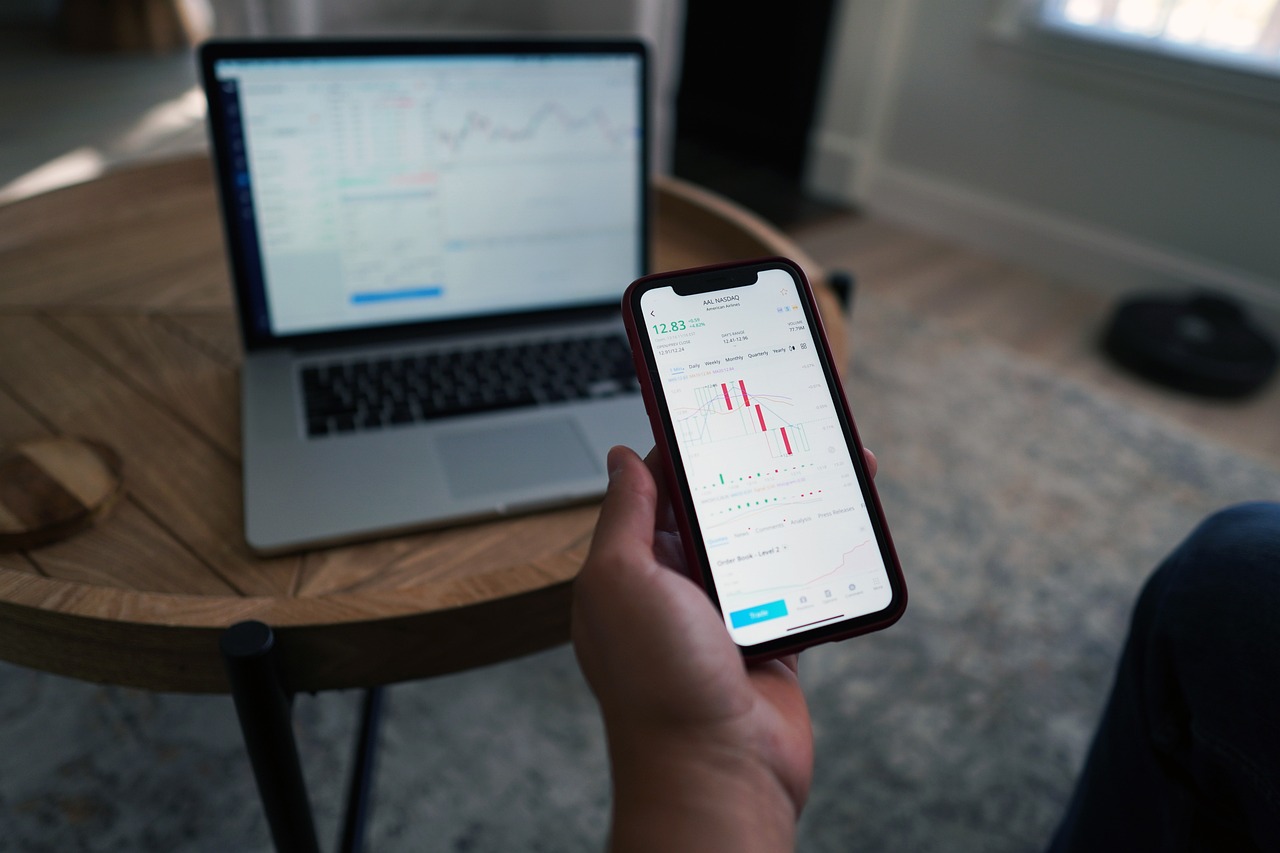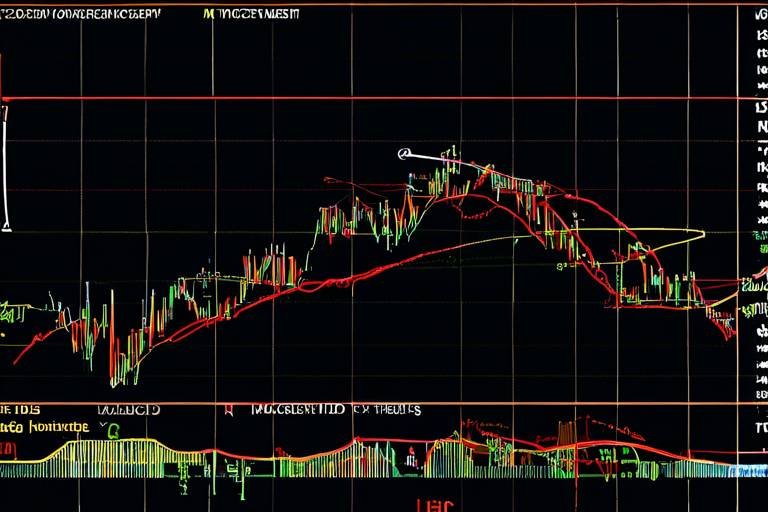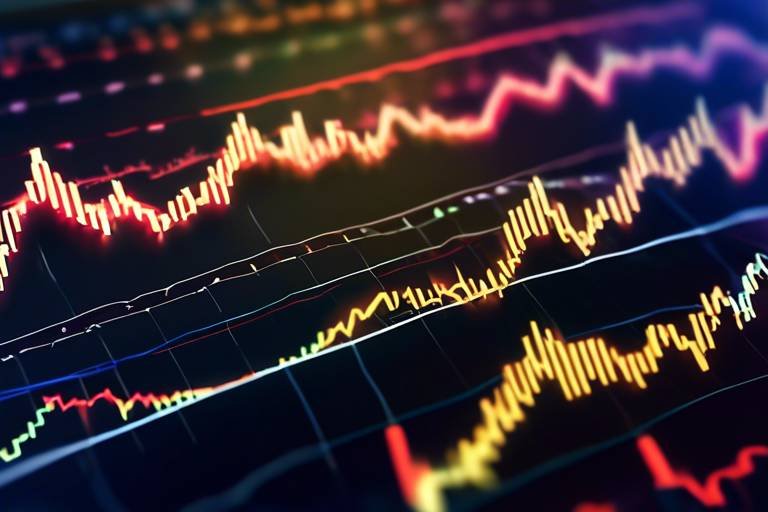How to Avoid Overtrading with Effective Technical Analysis
Overtrading can be a trader's worst nightmare, leading not only to financial losses but also to emotional turmoil. It's like running a marathon without a training plan; you might start off strong, but soon you'll find yourself exhausted and out of breath. So, how do we avoid this pitfall? The answer lies in effective technical analysis. By utilizing the right tools and strategies, you can enhance your trading discipline and make informed decisions that keep you on the right track.
Before we dive into the solutions, let's first understand what overtrading really is. Essentially, overtrading occurs when a trader executes too many trades in a short period, often driven by emotions or a desire to recover losses. This can lead to significant financial setbacks and increased stress levels. Recognizing the signs of overtrading is crucial; if you find yourself constantly checking your trades, feeling anxious about market movements, or making impulsive decisions, it’s time to take a step back. Just like a car running on empty, if you push yourself too hard, you're bound to break down.
Now that we have a grasp on overtrading, let's shift our focus to technical analysis. This approach is vital for traders looking to make well-informed decisions. Technical analysis involves studying market trends, price movements, and various indicators to predict future price action. Think of it as your roadmap in the chaotic world of trading. By understanding the market's historical performance, you can anticipate where it might be headed next. This method not only helps in identifying potential trading opportunities but also assists in determining the best times to enter and exit trades.
To effectively engage in technical analysis, you'll need the right tools at your disposal. Here are some popular indicators and software that can elevate your trading game:
| Tool | Purpose |
|---|---|
| Moving Averages | Identify trends and smooth price data. |
| Relative Strength Index (RSI) | Measure the speed and change of price movements. |
| MACD | Show the relationship between two moving averages. |
| Charting Software | Visualize market data and apply technical indicators. |
Indicators such as Moving Averages and the Relative Strength Index (RSI) play a crucial role in analyzing price trends. Moving Averages help smooth out price data to identify the direction of the trend, while the RSI indicates whether a market is overbought or oversold. Incorporating these indicators into your trading plan can provide valuable insights and aid in making more calculated decisions.
Recognizing chart patterns is another essential skill for traders. Patterns like head and shoulders, flags, and double tops/bottoms can signal potential market reversals or continuations. Understanding these patterns allows you to make predictions about future price movements, ultimately enhancing your decision-making process. Just like a detective piecing together clues, identifying these patterns can lead to successful trades.
One of the most effective ways to avoid overtrading is by developing a solid trading plan. This plan should include key components such as risk management strategies, entry and exit points, and clear criteria for executing trades. Without a plan, trading can feel like sailing a ship without a compass; you could end up lost in the vast ocean of market fluctuations. By outlining your objectives and sticking to your plan, you can maintain discipline and avoid the temptation to overtrade.
Establishing clear, achievable goals is another vital aspect of maintaining focus and discipline in trading. Instead of aiming for unrealistic profits, set realistic targets that you can strive for over time. This helps to keep your expectations in check and reduces the pressure to make hasty decisions. Consider breaking down your larger goals into smaller, manageable milestones. This way, you can celebrate small victories along the way, keeping your motivation high and your trading journey enjoyable.
Tracking your progress is essential for continuous improvement. Regularly reviewing your trades and analyzing your performance can help you identify strengths and weaknesses in your strategy. Consider keeping a trading journal where you document your trades, the rationale behind them, and the outcomes. This practice not only provides valuable insights but also helps you adjust your strategies based on performance analysis. Remember, even the best traders started somewhere; it’s all about learning and evolving.
Markets are dynamic, and being able to adapt to changing conditions is key to success. Your technical analysis approach should be flexible enough to accommodate different market trends and volatility. For instance, during a bullish market, you might focus on breakout strategies, while in a bearish market, you may want to consider short-selling opportunities. Staying informed about market news and trends will enable you to fine-tune your analysis and make timely decisions.
- What is overtrading? Overtrading occurs when a trader executes too many trades in a short period, often leading to financial losses and emotional stress.
- How can technical analysis help prevent overtrading? By providing insights into market trends and price movements, technical analysis helps traders make informed decisions, reducing impulsive trading.
- What are some common indicators used in technical analysis? Popular indicators include Moving Averages, RSI, and MACD, which help analyze price trends and market conditions.
- Why is a trading plan important? A trading plan outlines your objectives and strategies, helping you maintain discipline and avoid the temptation to overtrade.

Understanding Overtrading
Overtrading is a term that sends shivers down the spine of many traders. It refers to the act of buying and selling securities too frequently, often driven by emotional impulses rather than sound analysis. Imagine a kid in a candy store, overwhelmed by choices and unable to resist indulging in every sweet treat. Just like that kid, traders can easily get caught up in the thrill of the market, leading to rash decisions that can result in significant losses.
But what causes this phenomenon? Well, there are several factors at play. Emotional stress, fear of missing out (FOMO), and the desire to recover losses can all contribute to a trader’s tendency to overtrade. When the markets are volatile, the temptation to make quick trades can become even stronger. This is akin to trying to catch a bus that’s already left the stop; the more you chase it, the further away it seems. Recognizing these triggers is the first step toward curbing overtrading.
Why is it crucial to address overtrading? The consequences can be dire. Not only can it lead to financial ruin, but it can also take a toll on your mental health. Imagine the stress of constantly watching your portfolio fluctuate, feeling like you're on an emotional rollercoaster. Overtrading can create a cycle of anxiety and impulsiveness, making it difficult to think clearly and make rational decisions. Therefore, understanding overtrading is essential for any trader who wishes to succeed in the long run.
To put it simply, avoiding overtrading is about maintaining discipline and control. By implementing effective strategies and embracing technical analysis, traders can navigate the market with a clear head and a focused approach. This not only helps in preserving capital but also enhances the overall trading experience. After all, trading should be about making informed decisions, not getting swept away by the tide of emotions.
In summary, understanding overtrading is the cornerstone of successful trading. By recognizing its causes and effects, traders can take proactive steps to manage their behavior. The journey towards disciplined trading begins with awareness, and from there, the implementation of effective strategies can pave the way for a more profitable trading experience.

Importance of Technical Analysis
When it comes to trading, the importance of technical analysis cannot be overstated. It serves as the backbone for traders who wish to make informed decisions rather than relying on gut feelings or random hunches. Think of it as a compass guiding you through the unpredictable waters of the financial markets. By analyzing past market data, particularly price and volume, traders can forecast future price movements and identify potential trading opportunities.
One of the key benefits of technical analysis is its ability to help traders recognize market trends. Whether you're a day trader looking to capitalize on short-term fluctuations or a long-term investor aiming for substantial gains, understanding trends is crucial. For instance, if you notice that a stock has been consistently moving upwards over several weeks, it may indicate a strong bullish trend. This insight allows you to make timely decisions, such as entering a position before the price skyrockets.
Moreover, technical analysis assists in identifying support and resistance levels. These are critical points where the price tends to reverse or consolidate. Support levels indicate where buying interest is strong enough to overcome selling pressure, while resistance levels are where selling interest prevails. By pinpointing these levels, traders can better strategize their entry and exit points, thus enhancing their chances of success.
Another significant aspect of technical analysis is its ability to provide risk management tools. By using various indicators and chart patterns, traders can set stop-loss orders and establish risk-reward ratios. This is essential in maintaining discipline and avoiding the emotional rollercoaster that often accompanies trading. For example, if you set a stop-loss just below a support level, you can minimize your losses if the market moves against you.
Furthermore, technical analysis is not just limited to stocks; it can be applied across various asset classes, including forex, commodities, and cryptocurrencies. This versatility makes it an invaluable tool for traders in today's diverse market landscape. By utilizing technical analysis, traders can adapt their strategies to different markets and conditions, ensuring they remain competitive regardless of the asset they choose to trade.
In summary, the importance of technical analysis lies in its ability to provide traders with a structured approach to decision-making. It helps in identifying trends, recognizing support and resistance levels, managing risk, and adapting to various market conditions. By embracing technical analysis, traders can significantly enhance their trading discipline and improve their overall performance.

Key Tools for Technical Analysis
When it comes to technical analysis, having the right tools is like having a compass in the wilderness; they guide you through the chaotic and often unpredictable world of trading. The market is a vast ocean, and without the right instruments, you might find yourself lost at sea. So, let’s dive into some of the essential tools that can enhance your trading strategies and help you make informed decisions.
First up are charting platforms. These platforms serve as your visual representation of market data, allowing you to analyze price movements over time. Popular platforms like TradingView and MetaTrader provide a plethora of features, including customizable charts, a variety of indicators, and the ability to backtest strategies. Imagine being able to see the waves of the market before they crash; that’s what a good charting platform offers.
Next, we have technical indicators, which are vital for interpreting market data. Indicators like the Moving Average and the Relative Strength Index (RSI) help traders gauge the momentum and direction of price movements. For instance, the Moving Average smooths out price data by creating a constantly updated average price. This can help you identify trends more clearly. Think of it as the steady hand of a skilled sailor navigating through turbulent waters.
In addition to indicators, recognizing chart patterns is crucial. Patterns such as Head and Shoulders, Double Tops, and Flags can provide insights into potential market reversals or continuations. For example, a Head and Shoulders pattern often indicates a reversal from a bullish to a bearish trend. It’s like reading the signs of a storm approaching; you want to prepare before the winds change.
Furthermore, trend lines are fundamental tools that traders use to identify the direction of the market. By drawing lines that connect significant highs or lows, you can visualize the trend and make better predictions about future movements. It’s similar to following a path through the forest; staying on the trail helps you avoid getting lost.
Lastly, don’t overlook the importance of backtesting software. This tool allows you to test your trading strategies against historical data to see how they would have performed in the past. By analyzing past performance, you can refine your strategies and make data-driven decisions. Think of it as rehearsing for a play; the more you practice, the better your performance will be when it’s showtime.
In summary, the key tools for technical analysis—charting platforms, technical indicators, chart patterns, trend lines, and backtesting software—are essential for any trader looking to enhance their skills and avoid overtrading. By leveraging these tools effectively, you can navigate the trading landscape with confidence and precision.
- What is the best charting platform for beginners?
TradingView is highly recommended for beginners due to its user-friendly interface and extensive features.
- How do I choose the right indicators for my trading strategy?
Start with a few basic indicators like Moving Averages and RSI, and gradually incorporate more as you gain experience.
- Can I use technical analysis for long-term trading?
Yes, technical analysis can be applied to long-term trading, but it’s essential to combine it with fundamental analysis for a comprehensive approach.

Common Indicators
When it comes to navigating the tumultuous waters of trading, understanding is like having a reliable compass. These indicators serve as essential tools that help traders analyze price trends and make informed decisions. Among the plethora of available indicators, two stand out for their effectiveness: Moving Averages and the Relative Strength Index (RSI). Let’s dive into how these indicators function and how you can incorporate them into your trading strategy.
Moving Averages are particularly useful for smoothing out price data over a specified period, making it easier to identify trends. By calculating the average price of an asset over a set number of days, traders can determine whether the market is trending upwards or downwards. For instance, a 50-day moving average can help you spot the general direction of the market over a longer period, while a 10-day moving average offers a more immediate view. When the shorter moving average crosses above the longer one, it often signals a buying opportunity, while a cross below may indicate a sell signal. Here’s a simple table to illustrate the concept:
| Moving Average Type | Purpose |
|---|---|
| 10-Day Moving Average | Short-term trend analysis |
| 50-Day Moving Average | Medium-term trend analysis |
| 200-Day Moving Average | Long-term trend analysis |
On the other hand, the Relative Strength Index (RSI) is a momentum oscillator that measures the speed and change of price movements. It ranges from 0 to 100 and is typically used to identify overbought or oversold conditions in a market. An RSI reading above 70 indicates that an asset might be overbought, suggesting a potential price pullback, while a reading below 30 indicates that it might be oversold, pointing to a possible price increase. This makes RSI an invaluable tool for spotting potential reversal points in the market.
Incorporating these indicators into your trading strategy can significantly enhance your decision-making process. However, it’s essential to remember that no single indicator is foolproof. Traders often combine multiple indicators to confirm signals and reduce the risk of false alarms. For example, you might use a moving average crossover in conjunction with the RSI to validate your entry and exit points. This multi-faceted approach can provide a more comprehensive view of market dynamics and help you make better-informed decisions.
Ultimately, mastering these common indicators is about practice and experience. As you become more familiar with how they behave under different market conditions, you’ll find that they can be more than just numbers on a chart; they can become your trusted allies in the quest for trading success.
- What are the best indicators for beginners? It's often recommended to start with Moving Averages and RSI, as they are easy to understand and widely used.
- How do I know when to use multiple indicators? Using multiple indicators can help confirm trends and signals. It's best to combine them when you want to increase the reliability of your trading decisions.
- Can I rely solely on indicators for trading decisions? While indicators provide valuable insights, it's crucial to consider other factors like market news and overall market conditions.

Chart Patterns
Chart patterns are like the fingerprints of the market, unique and telling a story about future price movements. Understanding these patterns is crucial for traders looking to make informed decisions. They provide a visual representation of market psychology, helping traders gauge whether to buy or sell. Just think of chart patterns as the roadmap that guides you through the often turbulent waters of trading. Each pattern can signal potential reversals or continuations in price movement, making them invaluable tools in your trading arsenal.
Some of the most common chart patterns include:
- Head and Shoulders: This pattern typically indicates a reversal. It consists of three peaks: a higher peak (the head) between two lower peaks (the shoulders). Recognizing this pattern can help traders anticipate a shift in market sentiment.
- Double Tops and Bottoms: These patterns signal potential reversals as well. A double top appears after an uptrend and indicates that the price may start to decline, while a double bottom appears after a downtrend, suggesting a potential price increase.
- Flags and Pennants: These are continuation patterns that often occur after a strong price movement. Flags resemble a small rectangle that slopes against the prevailing trend, while pennants look like small symmetrical triangles. Both suggest that the previous trend is likely to continue after a brief consolidation.
Recognizing these patterns requires practice and patience. Traders often rely on historical price data to identify these formations, as past performance can provide insight into potential future movements. Incorporating chart patterns into your technical analysis not only enhances your decision-making process but also helps you develop a more disciplined trading strategy.
Moreover, it's essential to combine chart patterns with other technical indicators for a more robust analysis. For example, using the Relative Strength Index (RSI) alongside chart patterns can provide additional confirmation of potential price movements. This synergy between different tools can significantly improve your trading accuracy and confidence.
In conclusion, chart patterns are more than just shapes on a graph; they are a reflection of market sentiment and can serve as powerful indicators of future price movements. By mastering these patterns, traders can enhance their technical analysis skills and make more informed trading decisions, ultimately leading to a more disciplined and profitable trading experience.
1. What are chart patterns?
Chart patterns are formations created by the price movements of an asset on a chart. They help traders identify potential market trends and reversals.
2. How can I learn to recognize chart patterns?
Practice is key! Use historical price charts to familiarize yourself with different patterns. There are also numerous online resources and courses available that can help you learn.
3. Should I rely solely on chart patterns for trading decisions?
While chart patterns are valuable, it's best to use them in conjunction with other technical indicators and analysis methods for a more comprehensive trading strategy.
4. Can chart patterns guarantee successful trades?
No pattern can guarantee success, as markets are influenced by numerous factors. However, understanding chart patterns can significantly improve your chances of making informed trades.

Developing a Trading Plan
Creating a solid trading plan is akin to building a sturdy foundation for a house; without it, everything else is at risk of collapsing. A well-thought-out trading plan not only helps you avoid the pitfalls of overtrading but also serves as a roadmap for your trading journey. It encompasses various components that guide your decisions, ensuring you stay disciplined and focused on your goals.
First and foremost, your trading plan should include a clear risk management strategy. This is crucial because it helps you determine how much of your capital you are willing to risk on each trade. A common rule of thumb is to risk no more than 1-2% of your total trading capital on a single trade. By adhering to this principle, you can protect yourself from significant losses that could derail your trading career. Think of it as wearing a seatbelt; it’s a small precaution that can save you from severe consequences.
Next, you need to outline your entry and exit strategies. This means defining the criteria for when you will enter a trade and when you will exit, whether that’s taking profits or cutting losses. For instance, you might decide to enter a position when a specific technical indicator signals a buy, such as the Moving Average Convergence Divergence (MACD) crossing above zero. Conversely, you might set a stop-loss order at a certain percentage below your entry point to limit potential losses. By having these strategies in place, you’re less likely to make impulsive decisions driven by emotion.
Moreover, it’s essential to incorporate a section for trade review and analysis in your plan. After each trading session, take the time to reflect on your trades. What went well? What didn’t? This is where you can learn from your mistakes and successes alike. Consider maintaining a trading journal where you document each trade, including the rationale behind it, the outcome, and any lessons learned. This practice not only enhances your skills but also helps you adapt your strategies over time.
Finally, remember that a trading plan is not set in stone. The markets are dynamic, and so should be your approach. Regularly revisit and adjust your plan based on your experiences and the evolving market conditions. This flexibility is key to long-term success and can significantly reduce the chances of overtrading.
In summary, developing a comprehensive trading plan involves:
- Establishing a risk management strategy
- Defining entry and exit strategies
- Incorporating trade review and analysis
- Regularly updating your plan based on market conditions
By adhering to these principles, you’ll not only enhance your trading discipline but also set yourself up for greater success in the long run.

Setting Realistic Goals
When it comes to trading, setting realistic goals is not just a good idea; it's essential for maintaining a healthy mindset and ensuring long-term success. Think of your trading journey as a marathon, not a sprint. You wouldn't try to run 26.2 miles without proper training and a solid game plan, right? Similarly, entering the trading world without clear, attainable goals can lead to frustration and, ultimately, overtrading.
So, what does it mean to set realistic goals in trading? Essentially, it involves creating objectives that are achievable based on your current skill level, market conditions, and available time. Here are some key aspects to consider when setting your trading goals:
- Define Your Timeframe: Are you a day trader, swing trader, or long-term investor? Your goals should reflect your chosen trading style.
- Assess Your Risk Tolerance: Understand how much risk you are willing to take. This will help you set goals that align with your comfort level.
- Be Specific: Instead of saying, "I want to make money," specify how much you aim to earn over a certain period. For example, "I want to achieve a 10% return over the next quarter."
Moreover, it's crucial to break down these larger goals into smaller, manageable milestones. Just like climbing a mountain, you wouldn't try to reach the summit in one leap. Instead, you would take it step by step. For instance, if your ultimate goal is to become a consistently profitable trader, you might set monthly objectives such as:
| Month | Goal | Action Steps |
|---|---|---|
| 1 | Learn Technical Analysis Basics | Complete online courses and practice with demo accounts. |
| 2 | Develop a Trading Plan | Outline risk management strategies and entry/exit points. |
| 3 | Start Live Trading with Small Capital | Execute trades based on your plan and track performance. |
By setting smaller, incremental goals, you not only create a roadmap for your trading journey but also build your confidence as you achieve each milestone. Remember, trading is a continuous learning process, and adjusting your goals as you grow is perfectly fine. If you find that your initial targets were too ambitious or too conservative, don't hesitate to recalibrate them.
Lastly, it’s essential to maintain a positive mindset. Celebrate your small victories, and don't dwell too much on losses. Each trade is a lesson, and understanding that will help you stay focused on your long-term objectives. Setting realistic goals is your compass in the trading world, guiding you away from the pitfalls of overtrading and towards a more disciplined and successful approach.

Measuring Success
When it comes to trading, measuring success isn't just about the profits you make; it's about understanding your overall performance and learning from your experiences. Think of it like a sports team reviewing game footage after a match. They analyze what worked, what didn’t, and how they can improve for the next game. Similarly, traders need to evaluate their trades to refine their strategies and enhance their skills.
One effective way to measure success is by keeping a detailed trading journal. This journal should include every trade you make, the reasons behind it, and the outcomes. By documenting this information, you can identify patterns in your trading behavior, such as recurring mistakes or successful strategies. Over time, this will provide you with invaluable insights that help you make more informed decisions in the future.
In addition to a trading journal, consider utilizing performance metrics to quantify your success. Here are some key metrics to track:
- Win Rate: This is the percentage of trades that are profitable compared to the total number of trades. A higher win rate indicates a more successful trading strategy.
- Risk-Reward Ratio: This measures the potential profit of a trade against the potential loss. A favorable ratio (e.g., 2:1) suggests that your potential gains outweigh your risks.
- Maximum Drawdown: This metric shows the largest drop from a peak to a trough in your trading account balance. Understanding your drawdown helps you manage risk and set realistic expectations.
To illustrate these metrics, let’s look at a simple performance table:
| Metric | Value |
|---|---|
| Win Rate | 65% |
| Risk-Reward Ratio | 2:1 |
| Maximum Drawdown | 15% |
By regularly reviewing these metrics, you can gain a clearer picture of your trading performance. This ongoing evaluation allows you to adjust your strategies, set new goals, and ultimately improve your trading discipline. Remember, success in trading is not just about financial gains; it's about continuous learning and adapting to the ever-changing market landscape.
Lastly, don’t forget to celebrate your achievements, no matter how small. Recognizing your progress can boost your motivation and keep you engaged in the trading journey. Just like any other skill, trading requires patience and perseverance. So, take a moment to reflect on how far you've come and what you've learned along the way!
- What is overtrading? Overtrading occurs when a trader takes on too many trades or trades too frequently, often leading to losses and emotional stress.
- How can technical analysis help prevent overtrading? Technical analysis provides traders with tools and indicators to make informed decisions, helping them avoid impulsive trades.
- What should I include in my trading journal? Your trading journal should include details like entry and exit points, reasons for each trade, outcomes, and reflections on what you learned.
- How often should I review my trading performance? Regular reviews, such as weekly or monthly, can help you stay on track and make necessary adjustments to your trading strategies.

Adapting to Market Conditions
In the world of trading, adaptability is your best friend. Just like a chameleon changes its colors to blend into its surroundings, successful traders must adjust their strategies based on the ever-shifting market conditions. Imagine you’re driving a car; if the road conditions change from smooth asphalt to a rocky path, you wouldn’t keep driving at the same speed, would you? Similarly, in trading, understanding when to accelerate your trades or when to hit the brakes can make all the difference.
Market conditions can fluctuate due to various factors, including economic indicators, political events, and even social trends. For instance, during a bullish market, prices are rising, and optimism is high. In contrast, a bearish market is characterized by falling prices and widespread pessimism. Recognizing these phases is crucial, as it allows you to tailor your technical analysis and trading strategies accordingly.
One effective way to adapt is by using technical indicators that respond to market changes. For example, the Average True Range (ATR) can help you gauge market volatility. When volatility is high, you might want to adjust your stop-loss orders or position sizes to mitigate risk. Conversely, in a stable market, you may choose to take on more trades, as the chances of success are typically higher.
Moreover, it's essential to stay informed about economic news and events that can impact market conditions. A sudden interest rate hike or a geopolitical crisis can create volatility, and being aware of these can help you make timely decisions. For instance, if you know a major economic report is due, you might decide to hold off on entering new trades until the data is released, allowing you to avoid unnecessary risk.
Another key aspect of adapting to market conditions is reviewing and adjusting your trading plan. Regularly assess your strategies and results. If you notice that a particular approach isn’t working in the current market, don’t hesitate to tweak it. This could involve changing your entry and exit points, adjusting your risk management techniques, or even exploring new indicators that might be more effective in the current environment.
In conclusion, the ability to adapt to market conditions is not just a skill but a necessity for any trader aiming for long-term success. By staying vigilant, utilizing the right tools, and continuously refining your approach, you can navigate the turbulent waters of trading with confidence and poise.
- What is the best way to adapt to changing market conditions?
Staying informed about market news, using responsive technical indicators, and regularly reviewing your trading plan are key strategies. - How often should I adjust my trading strategies?
It’s wise to review your strategies after significant market movements or economic events, and to make adjustments as needed. - Can I rely solely on technical analysis to adapt to market conditions?
While technical analysis is crucial, it should be complemented with fundamental analysis and awareness of market news for the best results.
Frequently Asked Questions
- What is overtrading and why is it a problem?
Overtrading refers to the excessive buying and selling of assets beyond your planned strategy. It can lead to significant losses, emotional stress, and burnout. Recognizing overtrading is crucial for maintaining a healthy trading mindset and achieving long-term success.
- How can technical analysis help in avoiding overtrading?
Technical analysis provides traders with essential tools and insights to make informed decisions. By identifying market trends and price movements, traders can avoid impulsive trades and stick to their strategies, ultimately reducing the risk of overtrading.
- What are some key tools for performing technical analysis?
Some popular tools for technical analysis include indicators like Moving Averages, Relative Strength Index (RSI), and various chart patterns. These tools help traders analyze market data and identify potential trading opportunities, allowing for more disciplined decision-making.
- Can you explain the importance of having a trading plan?
A solid trading plan acts as a roadmap for your trading journey. It outlines your risk management strategies, entry and exit points, and helps keep your emotions in check. By following a well-structured plan, you can avoid the pitfalls of overtrading and stay focused on your goals.
- How do I set realistic trading goals?
Setting realistic trading goals involves understanding your risk tolerance, market conditions, and personal financial situation. Break down your larger goals into smaller, achievable targets to maintain motivation and discipline throughout your trading journey.
- What methods can I use to measure my trading success?
To measure your trading success, keep a detailed trading journal that tracks your trades, strategies, and outcomes. Analyze your performance regularly to identify strengths and weaknesses, allowing you to adjust your approach for continuous improvement.
- How can I adapt my trading strategies to changing market conditions?
Adapting to market conditions involves staying informed about economic news, trends, and volatility. Regularly review your technical analysis tools and be willing to adjust your strategies based on current market dynamics to ensure you stay ahead of the curve.



















